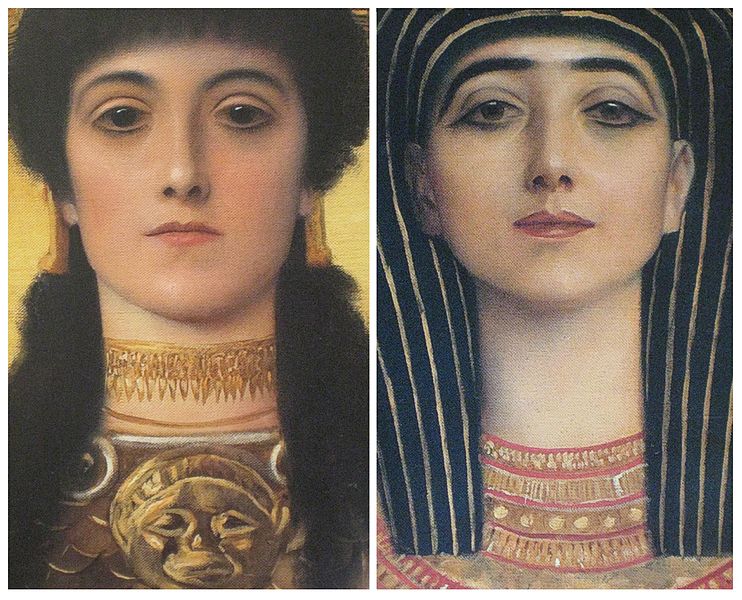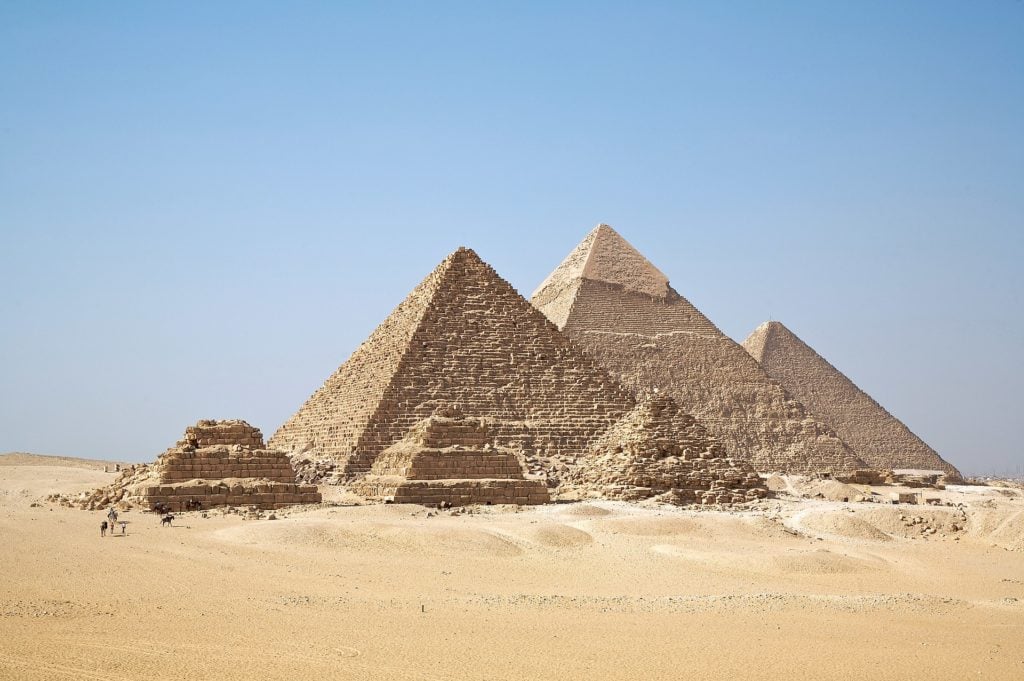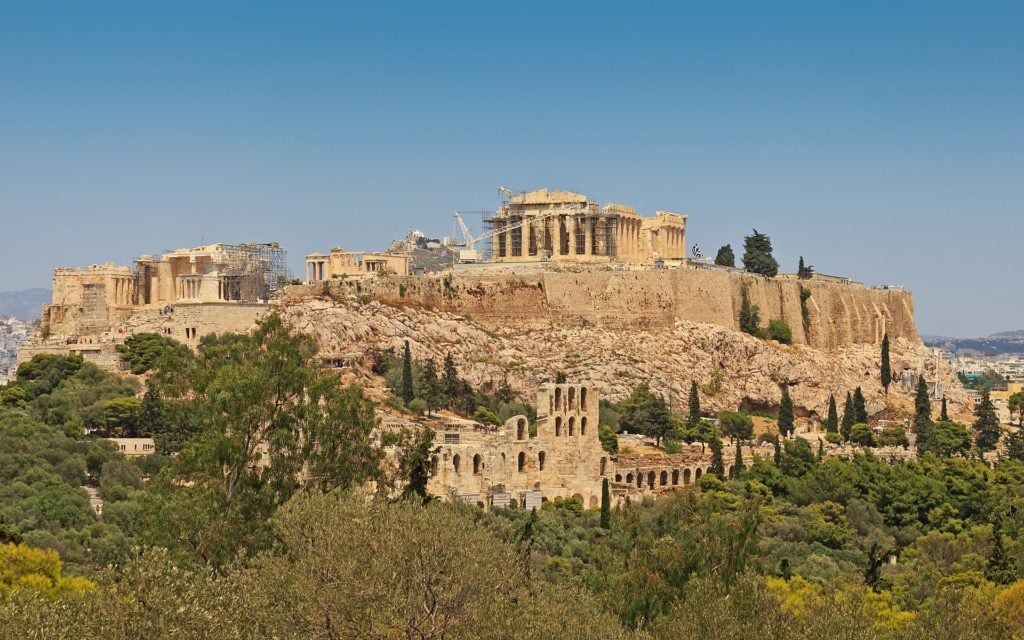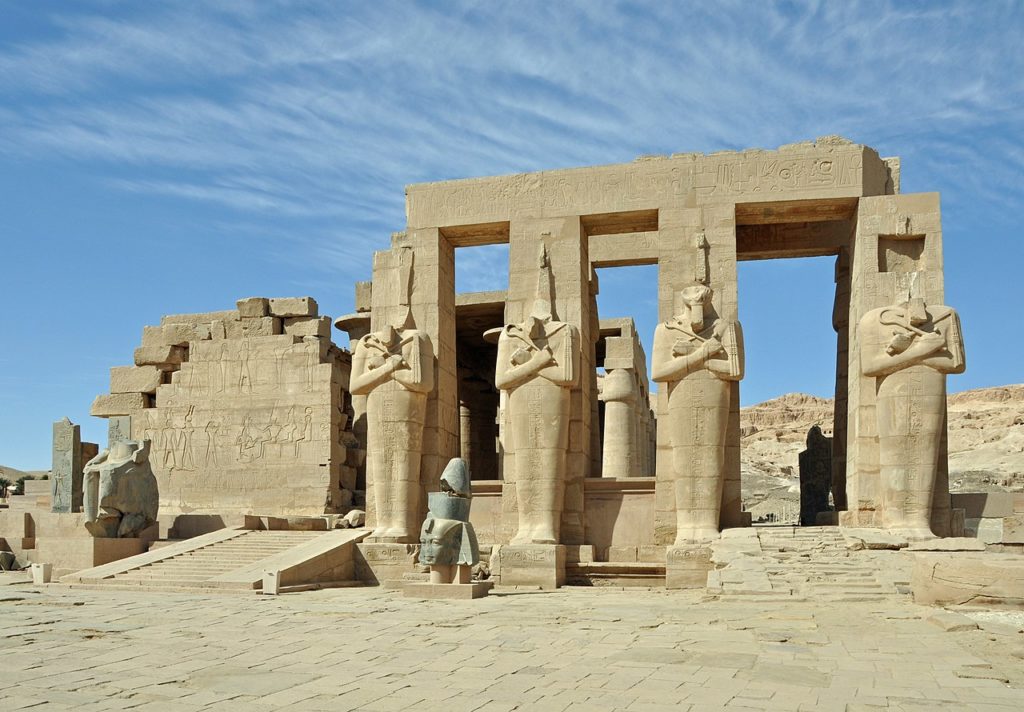
In the list of countries with the richest heritage, because Egypt’s recorded history began earlier, Egypt comes out on top with ancient Greece just behind it.
Egyptian culture began to solidify during the Narmer dynasty in approximately 3150 BC, while ancient Greeks are descendants of the Mycenaeans, as DNA studies have confirmed.
The Mycenaean civilization is known to have taken off around 1700 BC and lasted until 1100 BC, which is when the ancient Greek civilization blossomed.
There were many similarities between ancient Egypt and Greece. Nonetheless, they were located in different geographical regions and thus did not have contact or interact with the same cultures and civilizations. There were, as a result, also quite distinct.

At some point in history, during the time of the conquest of Alexander the Great and the Ptolemaic Dynasty that followed, the two civilizations went hand in hand.
However, that period was an exception. This coexistence between the two cultures did not affect either one greatly, and the results were not lasting with the exception of the city of Alexandria, which was practically a small Greece within Egypt.
Nevertheless, the Alexander and Ptolemaic era did not turn Egypt into an ancient Greek colony, and mainland Greece did not adopt major elements of the Egyptian civilization either.
Governance in Ancient Greece and Egypt
The Egyptians placed emphasis on central authority in which one king ruled over the entire land. Ancient Greeks, on the other hand, had a decentralized political structure, and every city-state had its own government and leader.
Several scholars believe that the desire for large buildings, such as the pyramids, required hundreds or even thousands of laborers. Therefore, a class system that would provide many laborers at the service of the king was of great importance. Social stratification was hence vital for the Egyptians.
However, both civilizations had an upper class composed of landowners, and each of these upperclassmen had their peasants and slaves. Religious priests were likewise part of the upper class, as they had a great say in the political happenings of both civilizations.
The two societies were conservative, and change was not encouraged unless it was unavoidable, such as in cases of foreign invasion or natural disaster.
The polis was the focus of the classical era of Greece. It consisted of a large community that played an important role in shaping Greek culture, which was quite prominent in the world by the eighth century.
The polis was a complex hierarchical society built around the notion of citizenship. Upper class, middle class, and peasant households were all part of the Greek polis. None of them were dependent on a central government. They paid no taxes and did not rely on the government to provide them with basic necessities. In the polis, every single citizen had his due share.
The pharaohs in Egypt had a different approach in governing, as the pharaoh was the main ruler of Egypt, and, unlike Greek politics, the general public did not have any say or representation in the government.
The statuses of women and slaves were low in both civilizations. Slaves were, however, used widely for the building of temples and other structures, as well as serving households.

Religion
There was a difference in how ancient Greeks and Egyptians perceived divinity. The latter believed the pharaoh was some sort of god who was only answerable to higher gods. The ancient Egyptians believed there was more to life than just that on earth. Their idea of divine was more complex, and they believed that the dead would meet Osiris, the Egyptian god of re-birth, in the afterlife.
Much like the Greeks, the Egyptians attributed human characteristics to their gods: the physical body, shadow, name, spirit (Ka), personality, spirit or soul (Ba), immortality or eternity (Akh). The protection of these attributes was necessary when a person passed away so that person would achieve immortality in the afterlife.
The Greeks also had a very complex religious hierarchy system with many different gods. Zeus was the king and ruler of the other gods, and there were many gods and goddesses, such as the god of war (Ares) and the goddess of love (Aphrodite).
Furthermore, the Greeks also believed in the notion that the soul of the person continued to exist in the afterlife, as it went into the underworld to be ruled by the god of the underworld, Hades. Thus, both the Egyptians as well as the Greeks placed a great deal of importance on death and the afterlife. They were constantly being reminded about death and were very afraid of their fate after death.

Yet, contrary to the ancient Greeks, the Egyptians built pyramids for the comfort of their dead so they could have a better life after death, according to the archaeological community. For the Egyptians, the pyramids and other temples, such as the great Ramesseum, had great religious significance. The Ramesseum is more than a temple. Rather, it is an extended complex that Ramesses II built between Qurna and the desert.
Various historians have referred to it as one of the most gigantic and marvelous temples ever built in Egypt. The Ramesseum consisted of various courts, pylons, extremely large statues, and carvings of various war scenes depicted on the pylons. Overall, it was an extremely large and lavish piece of architecture that worked to display the grandeur of the great pharaoh, extending beyond religious significance.
On the other side of the Mediterranean was Pericles, and, even though he did not build the Acropolis complex, he did conduct major reforms to the architecture. During his leadership, he ordered the construction of new, large temples and, most importantly, commissioned the construction of the Parthenon within the Acropolis complex. It was during the Age of Pericles that the Acropolis gained its final shape.
Art in Egypt and Ancient Greece
As far as art is concerned, the Egyptians were more involved in creating great monumental and gaudy structures, while the Greeks were more keen on creating smaller, more literary pieces of art.
Egyptians were quite conservative in their production of artworks, and their style changed very little over time. Many of the surviving examples come from tombs and monuments, providing insight into ancient Egyptian beliefs on the afterlife.
There were many differences in artworks between the two civilizations. These can be attributed mostly to an underlying difference in religious beliefs between the two societies. As formerly mentioned, the Egyptians had quite a strong belief in the afterlife, and they built large pyramids and structures for the comfort of their dead so as to help them have a better life after their earthly presence.
Animals played an important role in Egyptian art, and paintings of symbolic animals were widely used. They were painted in many different colors that were more expressive rather than natural and contained exaggerations. Red and yellow were often used for skin to imply youth or old age. Ancient Egyptians used many art forms and depicted detailed human heads and bodies.
Most of the paintings they created were meant to provide company to people in the afterlife. These were produced on papyrus, paper-like sheets that they made from the papyrus plant found near the Nile.
Ancient Egyptians also constructed a wide array of potteries, including vases, amulets, and images of their gods and goddesses. Sculpture was a prominent art form in ancient Egypt with the Egyptians making large sculptures of their gods, pharaohs, and kings and queens. Along with the pyramids, the Sphinx is one of the most recognizable images representing Egypt.
Another quite prominent art form that distinguishes Egyptians was hieroglyphs, a fine art of symbols, which was actually their writing form, invented around 5,000 BC.
The ancient Greeks worked with marble and bronze for statues and other pieces of art, such as vases and ornaments. They also made produced clay and terracotta figures, idols, and statuettes. Monumental sculptures were quite a significant part of ancient Greek art.
Emblematic marble statues such as Hermes of Praxiteles, Nike of Samothrace, Poseidon, and the Parthenon complex of sculptures most closely represent the art of ancient Greece. The Greeks also used coins during their era, and many coins from ancient Greece have been found with patterns and designs.
This practice is still globally followed today. Furthermore, the Greeks invented the art of panel painting, whereby artists drew scenes over panels to depict stories. These were done on pillars and walls and often told epic tales of heroes and gods. Vase painting was another form of painting in ancient Greece.
In addition to painting and sculpting, pottery was used by the ancient Greeks for many different purposes, including for wine amphorae and decanters, everyday chores, and trophies for winners at the Olympic Games. Pottery was also used for drinking vessels such as kraters and hydria. They were adorned with paintings of gods, while miniature pottery was used to honor the gods.
Art in ancient Greece was vastly important. It appears in many historic places and was diversified over time. More importantly, Greek art paved the way for other Westernized art forms.
Mathematics in Construction of Dwellings
Ancient Greece and Egypt encouraged people to study mathematics and astronomy. Many current religious as well as social symbols (such as the sun or the moon) have been adopted from the ideas behind Egyptian religion and mythology.
The ancient Egyptians believed there was more to life than that on earth. Much of their architecture, including the pyramids and houses they built were based on mathematics and geography. They used mathematics to erect buildings with particularly symmetrical designs and extensively relied on the numbers pi and phi.
For instance, researchers have noted that dividing the perimeter of the dwellings made by ancient Egyptians by their height gives a close approximation to 2pi, which is the same result one would get if one were to divide the circumference of a circle by its radius. This suggests ancient Egyptians were likely emulating the spherical form of the Earth.
Furthermore, dwellings of ancient Egyptians were quite symmetrical themselves. This was so as to create harmony in the structure. It would allow residents to remain in harmony with each other. One thing that is common in both civilizations was the use of landscaping, which was quite important.
The key here was harmony in general, and both ancient Greeks and Egyptians incorporated this into their architecture. Much like the Egyptians, the Greeks also considered the mental well-being of their people important and did their best to optimize this in residential units.
For ancient Greeks, forests and gardens were considered to be places visited by gods quite often. In ancient Athens, houses contained courtyards and gardens surrounded by walls. Wealthy Greeks were known to have large gardens with flower gardens and other plants.
Conclusion

The ancient civilizations of Egypt and Greece had many similarities as well as differences. They both paid plenty of attention to harmony in their residencies. It was very common to have extended family households, at least in rural areas. This was partly on account of polygamy and slavery, and there were households that numbered hundreds of occupants, including the slaves.
Other similarities and differences also existed within the realms of art, architecture, geography, and climate, as well as the political and social spheres of the two civilizations.
Both civilizations managed to survive for centuries keeping true to their roots and values. Perhaps the greatest impact the Egyptian and Greek civilizations had on Western society was the adoption of high ideals and symbols.
See all the latest news from Greece and the world at Greekreporter.com. Contact our newsroom to report an update or send your story, photos and videos. Follow GR on Google News and subscribe here to our daily email!



